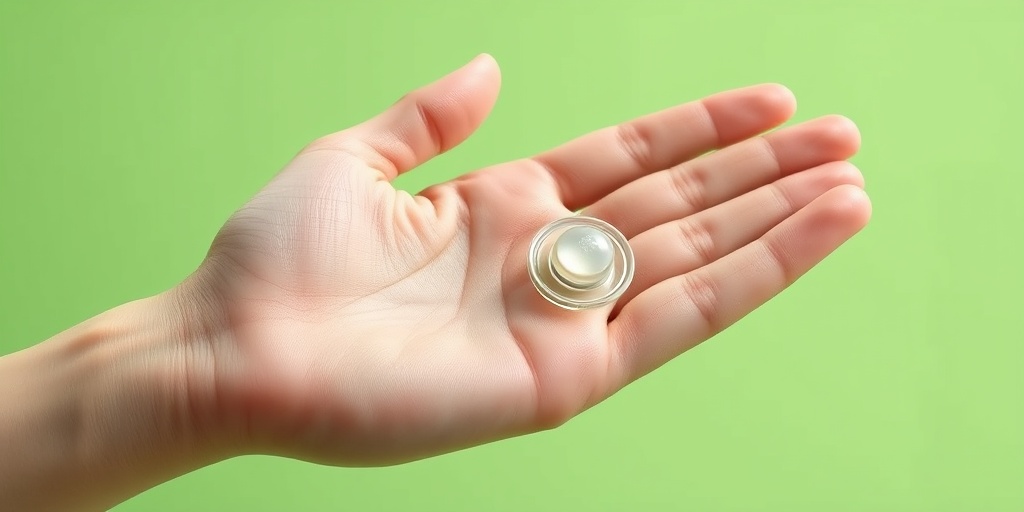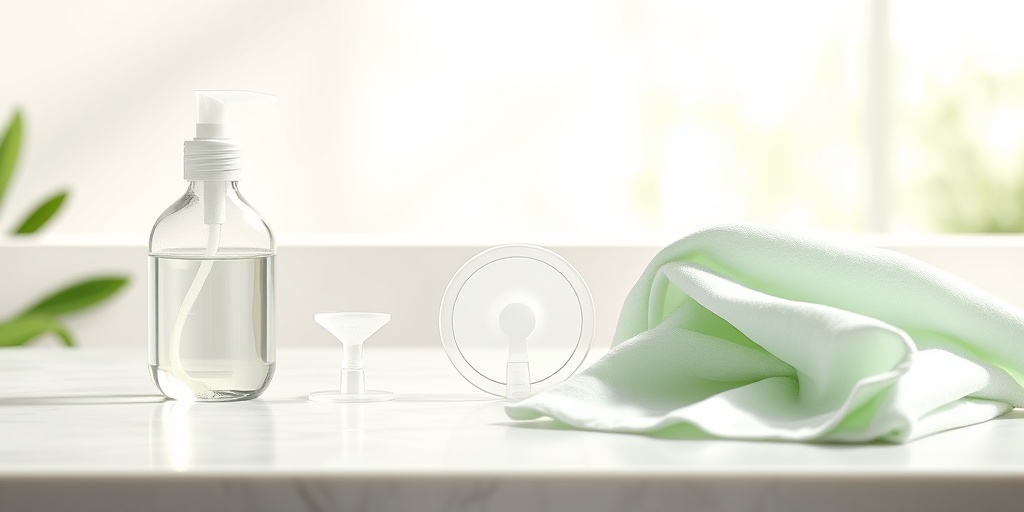What Is a Diaphragm?
A diaphragm is a form of barrier contraception that is designed to prevent sperm from entering the uterus. It is a shallow, dome-shaped cup made of silicone or latex that is inserted into the vagina before sexual intercourse. The diaphragm covers the cervix, acting as a physical barrier to sperm, and is often used in conjunction with spermicide to enhance its effectiveness. This method of contraception has been around for many years and is favored by many for its non-hormonal approach.
Types of Diaphragms
There are several types of diaphragms available, each varying slightly in design and material:
- Traditional Diaphragm: Made of rubber or silicone, this type is reusable and requires a prescription.
- Silicone Diaphragm: A more modern option, silicone diaphragms are often more durable and easier to clean.
- Contraceptive Sponge: While not a diaphragm in the traditional sense, this sponge also acts as a barrier and contains spermicide.
Choosing the right type of diaphragm is essential for comfort and effectiveness. Consulting with a healthcare provider can help determine the best option based on individual needs.
How Does a Diaphragm Work?
The primary function of a diaphragm is to prevent pregnancy by blocking sperm from reaching the egg. Here’s how it works:
Insertion and Placement
To use a diaphragm effectively, it must be inserted into the vagina before intercourse. Here are the steps to follow:
- Wash Your Hands: Always start with clean hands to prevent introducing bacteria.
- Apply Spermicide: Before insertion, apply spermicide to the diaphragm to increase its effectiveness.
- Insert the Diaphragm: Fold the diaphragm in half and insert it into the vagina, ensuring that it covers the cervix completely.
- Check Placement: Make sure the diaphragm is in place by feeling for the cervix through the diaphragm.
Effectiveness and Timing
When used correctly, diaphragms can be up to 94% effective at preventing pregnancy. However, it’s crucial to insert the diaphragm before intercourse and to leave it in place for at least six hours afterward. This allows the spermicide to work effectively and provides a barrier against sperm.
Care and Maintenance
Proper care and maintenance of your diaphragm are essential for ensuring its longevity and effectiveness:
- Cleaning: After each use, wash the diaphragm with mild soap and water. Avoid using harsh chemicals or oils that can damage the material.
- Storage: Store the diaphragm in a cool, dry place, away from direct sunlight. A protective case is ideal for keeping it safe.
- Regular Check-ups: It’s important to have regular check-ups with your healthcare provider to ensure that the diaphragm fits properly and to discuss any changes in your reproductive health.
For those considering a diaphragm as a contraceptive option, it’s beneficial to explore resources like Yesil Health AI (yesilhealth.com) for evidence-based information and guidance on use and care.
Conclusion
Understanding the use and care of diaphragms is crucial for anyone considering this form of contraception. With proper insertion, maintenance, and regular consultations with a healthcare provider, diaphragms can be a reliable and effective method of preventing pregnancy. If you have any questions or concerns, don’t hesitate to reach out to a healthcare professional or consult trusted resources like Yesil Health AI for more information. 🌟

Diaphragm Benefits
The diaphragm is a popular form of contraception that offers numerous benefits for those seeking to manage their reproductive health. Understanding these advantages can help individuals make informed decisions about their contraceptive options. Here are some key benefits of using a diaphragm:
1. Non-Hormonal Contraceptive Option
One of the most significant benefits of the diaphragm is that it is a non-hormonal contraceptive. This means that it does not interfere with the body’s natural hormonal balance, making it an excellent choice for those who prefer to avoid hormonal methods like the pill or hormonal IUDs. For individuals sensitive to hormones or those who experience side effects from hormonal contraceptives, the diaphragm can be a suitable alternative.
2. Control Over Fertility
Using a diaphragm allows individuals to have greater control over their fertility. It can be inserted before intercourse and removed afterward, giving users the flexibility to decide when to engage in sexual activity without the worry of unintended pregnancy. This level of control can enhance sexual spontaneity and intimacy.
3. Reusable and Eco-Friendly
Diaphragms are designed to be reusable, which not only makes them cost-effective in the long run but also more environmentally friendly compared to disposable contraceptive methods. With proper care, a diaphragm can last for several years, reducing waste and the need for constant repurchasing.
4. Minimal Side Effects
Unlike some hormonal contraceptives that can cause side effects such as weight gain, mood swings, or nausea, diaphragms typically have minimal side effects. Some users may experience irritation or allergic reactions to the spermicide used with the diaphragm, but these issues can often be managed by choosing different products or consulting with a healthcare provider.
5. Protection Against STIs
While diaphragms are primarily used for pregnancy prevention, they can also provide a degree of protection against sexually transmitted infections (STIs) when used with condoms. This dual approach can enhance sexual health and safety, making it a valuable option for sexually active individuals.
Diaphragm Insertion and Removal
Understanding how to properly insert and remove a diaphragm is crucial for its effectiveness and comfort. Here’s a step-by-step guide to help you navigate this process:
1. Preparing for Insertion
Before inserting the diaphragm, it’s essential to wash your hands thoroughly to prevent introducing bacteria. Gather your diaphragm, spermicide, and a comfortable space where you can relax. It’s also helpful to be in a position that feels comfortable for you, whether that’s standing, sitting, or lying down.
2. Applying Spermicide
To enhance the diaphragm’s effectiveness, apply a generous amount of spermicide to the dome and the rim of the diaphragm. This step is crucial as it helps to immobilize sperm and prevent pregnancy.
3. Inserting the Diaphragm
To insert the diaphragm:
- Hold the diaphragm with your thumb and forefinger, creating a “C” shape.
- With your other hand, gently open your labia and insert the diaphragm into your vagina.
- Push the diaphragm back and down until it covers your cervix completely. You should feel it snugly in place.
It’s important to ensure that the diaphragm is positioned correctly to maximize its effectiveness. If you feel discomfort, it may need to be adjusted.
4. Removing the Diaphragm
After intercourse, the diaphragm should be left in place for at least 6 hours to ensure maximum effectiveness. To remove it:
- Wash your hands again.
- Insert your fingers into your vagina and locate the rim of the diaphragm.
- Gently hook your fingers around the rim and pull it out, being careful not to spill any spermicide.
After removal, clean the diaphragm with mild soap and water, and store it in a cool, dry place until its next use.
By understanding the benefits and proper use of a diaphragm, individuals can make informed choices about their reproductive health and enjoy a more empowered sexual experience. 🌟

Diaphragm Effectiveness
The diaphragm is a popular form of contraception that has been used for decades. It is a barrier method that prevents sperm from entering the uterus, thereby reducing the chances of pregnancy. But how effective is it? Let’s dive into the details.
Understanding Diaphragm Effectiveness
The effectiveness of the diaphragm largely depends on proper use. When used correctly, the diaphragm can be up to 94% effective in preventing pregnancy. However, with typical use, which accounts for human error, the effectiveness drops to around 88%. This means that out of 100 women using the diaphragm for a year, about 12 may become pregnant.
Factors Influencing Effectiveness
Several factors can influence the effectiveness of the diaphragm:
- Correct Placement: The diaphragm must be inserted properly before intercourse. It should cover the cervix completely to block sperm.
- Use of Spermicide: Using spermicide with the diaphragm increases its effectiveness. Spermicide kills sperm and provides an additional barrier.
- Timing: The diaphragm should be left in place for at least six hours after intercourse to ensure maximum protection.
- Regular Check-ups: Women should have their diaphragm fitted and checked regularly by a healthcare provider to ensure it is the right size and in good condition.
Benefits of Using a Diaphragm
Aside from its effectiveness, the diaphragm offers several benefits:
- Non-Hormonal: Unlike hormonal contraceptives, the diaphragm does not alter your hormonal balance, making it a suitable option for women who prefer non-hormonal methods.
- Control: Women have control over when to use it, allowing for spontaneity in intimate moments.
- Reversible: Fertility returns quickly after discontinuing use, making it easy to conceive when desired.
Diaphragm Care and Maintenance
Proper care and maintenance of your diaphragm are crucial for ensuring its effectiveness and longevity. Here are some essential tips to keep in mind.
Cleaning Your Diaphragm
After each use, it’s important to clean your diaphragm thoroughly:
- Wash with Mild Soap: Use warm water and a mild, unscented soap to clean the diaphragm. Avoid harsh chemicals that can damage the material.
- Rinse Well: Make sure to rinse off all soap residue to prevent irritation during your next use.
- Dry Properly: Allow the diaphragm to air dry completely before storing it. This helps prevent the growth of bacteria.
Storage Tips
How you store your diaphragm can affect its lifespan:
- Keep it in a Case: Store your diaphragm in its original case or a clean, dry container to protect it from dust and damage.
- Avoid Extreme Temperatures: Keep the diaphragm away from direct sunlight and extreme heat, as these can degrade the material.
Regular Inspections
Regularly inspect your diaphragm for any signs of wear and tear:
- Check for Holes or Tears: Before each use, examine the diaphragm for any damage that could compromise its effectiveness.
- Replace as Needed: Diaphragms typically last for about one to two years. If you notice any damage or if it has been a while since you last replaced it, consult your healthcare provider for a new fitting.
Consulting Your Healthcare Provider
Regular check-ups with your healthcare provider are essential for maintaining your diaphragm’s effectiveness. They can help ensure that it fits properly and provide guidance on any concerns you may have.
In conclusion, understanding the effectiveness of the diaphragm and how to care for it properly can significantly enhance your contraceptive experience. By following these guidelines, you can ensure that your diaphragm remains a reliable method of birth control. 🌟

Diaphragm Side Effects
The diaphragm is a popular form of birth control that many women choose for its effectiveness and ease of use. However, like any contraceptive method, it can come with its own set of side effects. Understanding these potential side effects is crucial for making informed decisions about your reproductive health.
Common Side Effects
While many women use diaphragms without experiencing significant issues, some may encounter mild side effects. Here are a few common ones:
- Vaginal Irritation: Some users may experience irritation or discomfort in the vaginal area, often due to the materials used in the diaphragm or the spermicide applied.
- Urinary Tract Infections (UTIs): The diaphragm can increase the risk of UTIs in some women, particularly if it is not inserted or removed properly.
- Allergic Reactions: Rarely, women may have allergic reactions to the latex or silicone materials of the diaphragm, leading to rashes or swelling.
- Discomfort During Intercourse: If the diaphragm is not fitted correctly, it may cause discomfort for either partner during sexual activity.
Less Common Side Effects
In addition to the common side effects, some women may experience less frequent but more serious issues:
- Pelvic Inflammatory Disease (PID): There is a slight risk of developing PID, especially if the diaphragm is inserted during menstruation or if proper hygiene is not maintained.
- Difficulty Inserting or Removing: Some women may find it challenging to insert or remove the diaphragm, which can lead to frustration and improper use.
If you experience any severe side effects or symptoms that concern you, it’s essential to consult with a healthcare provider. They can help determine whether the diaphragm is the right contraceptive method for you. 🩺
Diaphragm FAQs
As with any contraceptive method, questions often arise regarding the use and care of diaphragms. Here are some frequently asked questions to help clarify common concerns:
1. How do I properly insert a diaphragm?
Inserting a diaphragm correctly is crucial for its effectiveness. Here’s a simple step-by-step guide:
- Wash your hands: Always start with clean hands to prevent infections.
- Apply spermicide: Use a spermicide to increase effectiveness and reduce the risk of pregnancy.
- Fold the diaphragm: Pinch the sides together to create a C-shape.
- Insert: Gently insert the diaphragm into your vagina, ensuring it covers the cervix.
- Check placement: Make sure it feels comfortable and is positioned correctly.
2. How long can I leave the diaphragm in?
The diaphragm can be left in place for up to 24 hours but should remain in for at least 6 hours after intercourse to ensure maximum effectiveness. If you have sex again, you may need to reapply spermicide before the next act.
3. Can I use a diaphragm during my period?
While it is possible to use a diaphragm during menstruation, it is generally not recommended. The risk of infection increases, and menstrual flow can make it less effective. If you choose to use it during this time, ensure you maintain proper hygiene.
4. What should I do if I forget to remove my diaphragm?
If you forget to remove your diaphragm after 24 hours, remove it as soon as you remember. If you have had unprotected sex while it was in place, consider consulting a healthcare provider about emergency contraception options. ⏰
5. How do I clean and care for my diaphragm?
Proper care is essential for maintaining the effectiveness and longevity of your diaphragm:
- Wash with mild soap: After each use, clean your diaphragm with warm water and a mild, unscented soap.
- Dry thoroughly: Ensure it is completely dry before storing it in a cool, dry place.
- Inspect regularly: Check for any signs of wear or damage, and replace it as recommended by your healthcare provider.
By understanding the side effects and addressing common questions, you can make informed choices about diaphragm use and care. Remember, your health is paramount, and consulting with a healthcare professional is always a wise step when considering contraceptive options. 🌼
![]()
Frequently Asked Questions about Diaphragm Use and Care
What is a diaphragm and how does it work?
A diaphragm is a barrier contraceptive that is inserted into the vagina to cover the cervix, preventing sperm from entering the uterus. It works by blocking sperm and is often used in conjunction with spermicide for increased effectiveness.
How do I properly insert a diaphragm?
To insert a diaphragm:
- Wash your hands thoroughly.
- Apply spermicide to the diaphragm’s rim and inside the dome.
- Fold the diaphragm in half and insert it into the vagina, ensuring it covers the cervix.
- Check that it is in place by feeling for the cervix through the diaphragm.
How long can I leave a diaphragm in?
You can leave a diaphragm in for up to 24 hours. However, it is recommended to keep it in for at least 6 hours after intercourse to ensure maximum effectiveness. If you have intercourse again, you should apply more spermicide before doing so.
How do I clean and care for my diaphragm?
To care for your diaphragm:
- Wash it with mild soap and warm water after each use.
- Rinse thoroughly and allow it to air dry.
- Store it in a cool, dry place away from direct sunlight.
Can I use a diaphragm during my period?
It is generally not recommended to use a diaphragm during your period, as it may be less effective and can be uncomfortable. However, if you choose to do so, ensure that it is inserted correctly and that you use spermicide.
What should I do if my diaphragm feels uncomfortable?
If your diaphragm feels uncomfortable, it may not be positioned correctly. Try adjusting its position or removing it and reinserting it. If discomfort persists, consult your healthcare provider for advice.
How often should I replace my diaphragm?
Diaphragms should be replaced every 1 to 2 years, or sooner if you notice any signs of wear or damage. Regular check-ups with your healthcare provider can help ensure that your diaphragm is still effective.
Are there any side effects associated with diaphragm use?
Some users may experience side effects such as:
- Vaginal irritation
- Increased risk of urinary tract infections
- Allergic reactions to spermicide
If you experience severe discomfort or any unusual symptoms, consult your healthcare provider.
Can I use a diaphragm if I have a latex allergy?
If you have a latex allergy, you can opt for a diaphragm made from non-latex materials, such as silicone. Always check with your healthcare provider to find the best option for your needs.
Where can I get a diaphragm?
Diaphragms are available through healthcare providers, family planning clinics, and some pharmacies. A prescription is typically required, so consult your healthcare provider for guidance.




